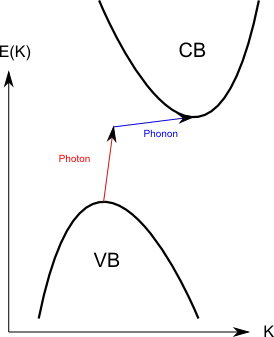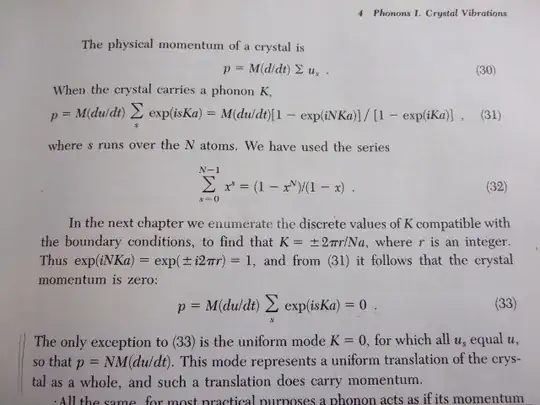Almost every solid state physics textbook says crystal momentum is not really physical momentum. For example, phonons always carry crystal momentum but they do not cause a translation of the sample at all.
However, I learned that in indirect-band-gap semiconductors, we need phonons to provide the crystal momentum transfer to allow electron transitions between the top of the valance band and the bottom of the conduction band. Along with absorbing or emitting photons, of course.
Photons do carry physical momentum. For the purpose of momentum conservation, it seems that phonons do carry physical momentum as well.
How can we explain this?
To put it more specifically, I drew a graph to tell the story:

$K$ (capital) is crystal momentum.
For such a transition, the photon provides most of the energy transfer (and a little momentum transfer $hk$; $k$ in lower case), while the phonon provides most of the momentum transfer (and a little energy).
Similar graphs can be found in most solid state physics textbooks. This picture tells me that: either the photon participating in the transition carries crystal momentum, which value is equal to physical momentum $hk$; or the crystal momentum itself is a kind of physical momentum.
However, one can prove that a phonon does not carry physical momentum (here I quote Kittel's "Introduction to Solid State Physics"):

So, how do we explain the momentum transfer in the electron transition aforementioned?